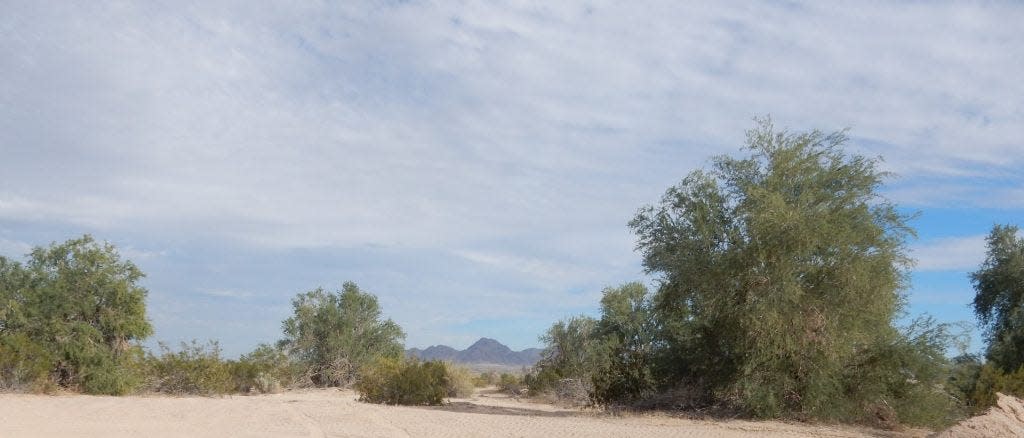Huge solar project near Desert Center would devastate animals, forests, Native sites

For most people, the tiny town of Desert Center, situated on the I-10 corridor in a remote expanse of eastern Riverside County’s Chuckwalla Valley, is just a lifeless blip on the map, a place close to the southeastern boundaries of Joshua Tree National Park.
It’s the perfect place, some might think, for the 2,600-acre Oberon Solar Project, which was approved this month by the Bureau of Land Management.
But they couldn’t be more wrong. And here’s why.
This no wasteland. This area of California desert wilderness is a rich and abundant land of storied landscapes and life, a land of critical environmental and cultural significance that we cannot afford to sacrifice.
Here, in this critical transitional wilderness corridor linking the Western Colorado-Sonoran and Mojave Deserts, old-growth desert ironwood forests up to 1,200 years old grow in abundance.
Endangered California desert tortoises flourish here. Sacred sites of the desert’s Native people abound here and include multiple trails that link vital water sources, village sites, petroglyph panels, and lithic scatter around ancient lakebeds.
Now, much of this stands to be forever erased.
For our federal government to give license to corporations who stand to gain money by exploiting and destroying our public wilderness in this way is a disgrace and is the antithesis of environmental sustainability. Siting large-scale renewable energy projects in California’s desert wilderness areas is not only unnecessary — rooftop solar is a viable alternative — but deeply unethical.
The approval for the Oberon Solar Project is especially upsetting to environmentalists advocating for desert protections against huge renewable energy projects here and in other California and Nevada desert wildlands.
Because approval has been made directly by U.S. Secretary of the Interior Deb Haaland, the standard 45-day public comment process following such approvals has been eliminated.
This, at a time when the California Public Utilities Commission is considering a plan that would make it too costly for many Californians to embrace solar power, which in turn increases our state’s reliance on corporate power sources such as PG&E, which has a recent and horrific record of negligence in inflicting extreme wildfire damage and loss of life.
And this, during the ongoing global coronavirus pandemic, when ugly projects such as Oberon can easily jump on the bandwagon of pandemic profiteering to gain approval while a public is kept outside of the approval and comment process.
I can imagine the red-tail hawks and large birds of prey circling above Oberon as it’s built, stunned by the loss of their microphyll desert woodlands: Ironwood, Palo Verde and Mesquite.
Some, diving for what they think is water but is actually a super-heated solar panel lake, will be instantly incinerated. I feel the agony of the desert tortoises being ripped from ancestral burrows and safe desert trails in the only world they’ve ever known. And I cry, knowing that my little grandchildren very well may come of age to a desert that is more of a junkyard than the sacred landscape I’ve been so privileged to know.
We can do better than this. We must do better than this. Our survival depends on this simple tenet: You don’t save the planet by destroying the planet, especially our remaining wildlands.
Ruth Nolan of Palm Desert is professor of English at College of the Desert and California Indian Nations College. She's a former wildland firefighter for the Bureau of Land Management’s California Desert District.
This article originally appeared on Palm Springs Desert Sun: Desert Center solar farm would devastate forests and Native sites

